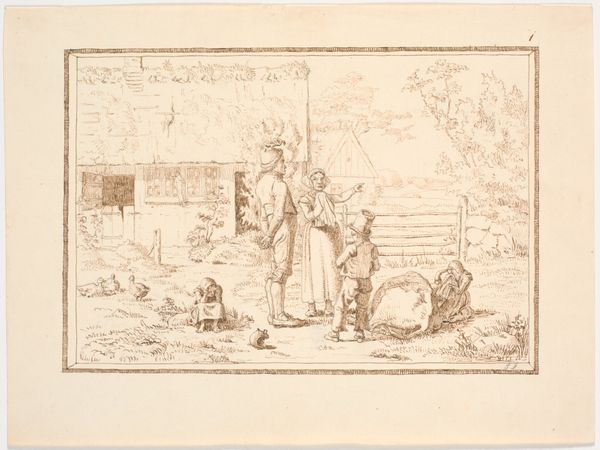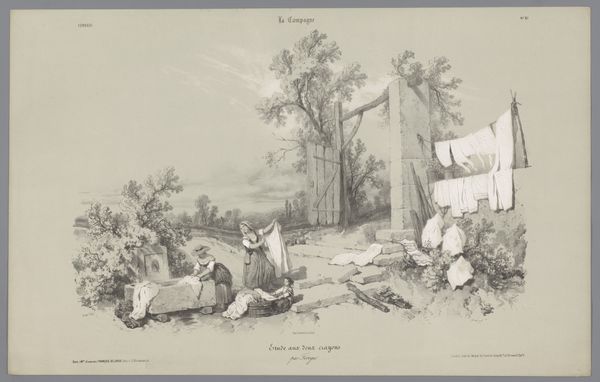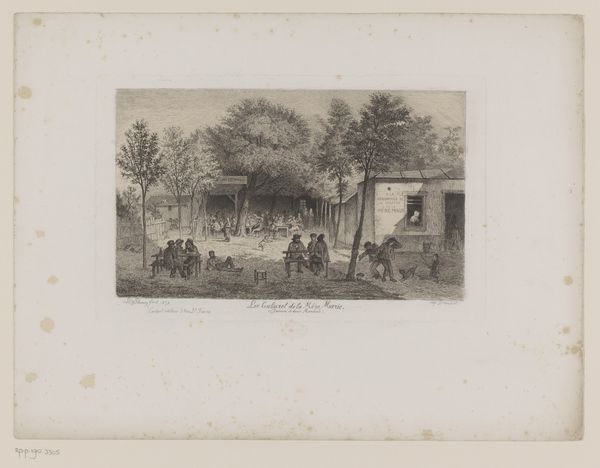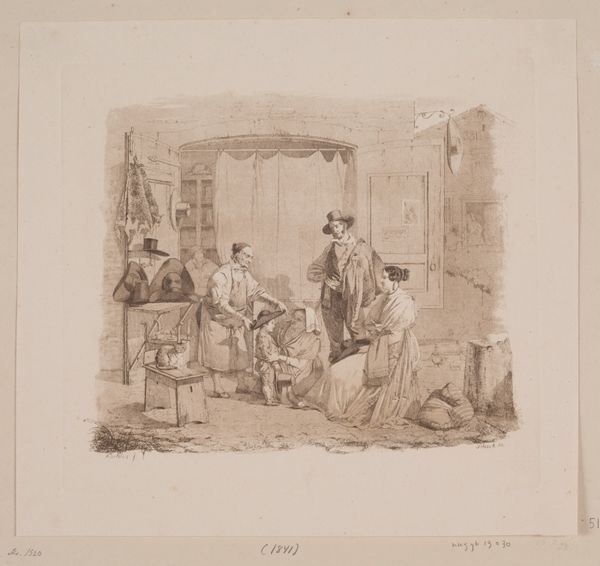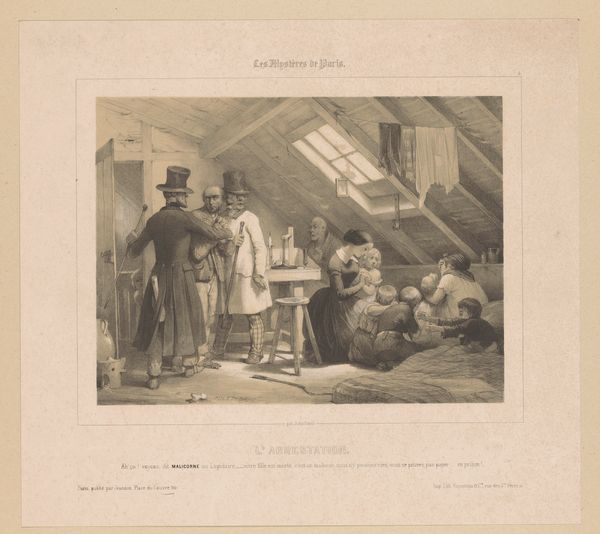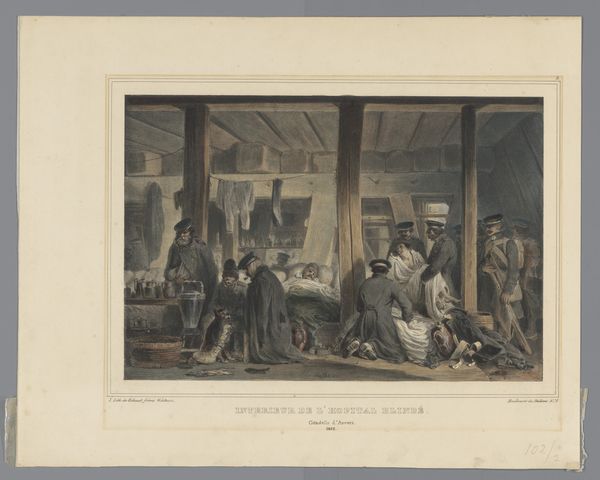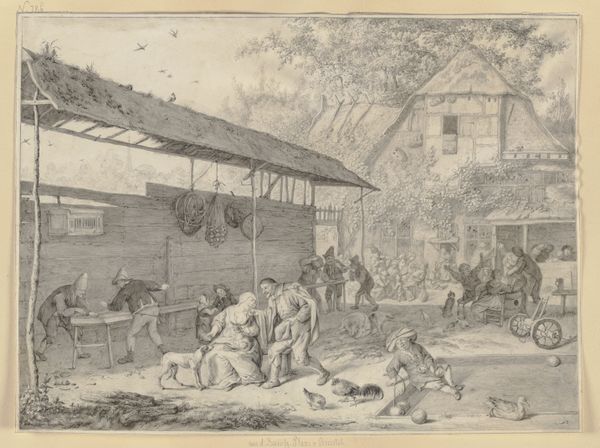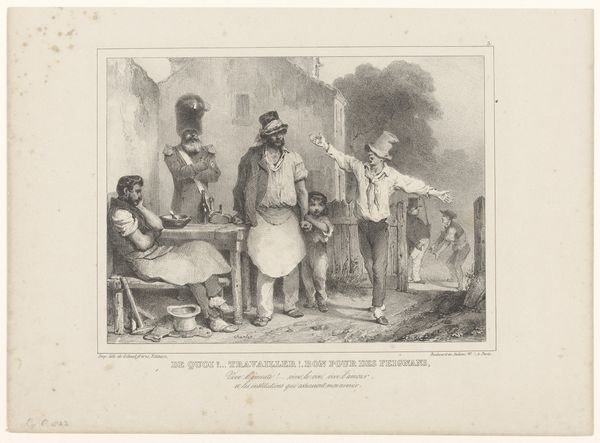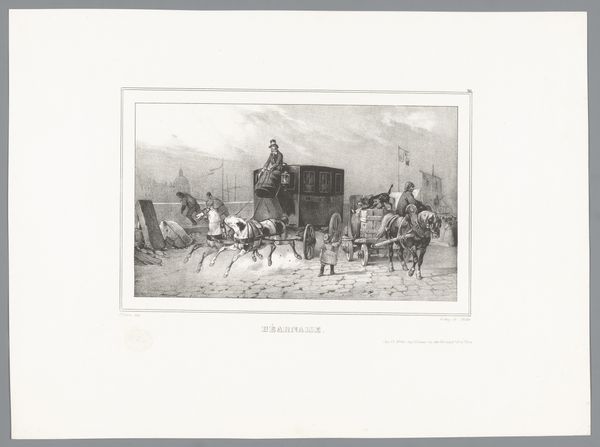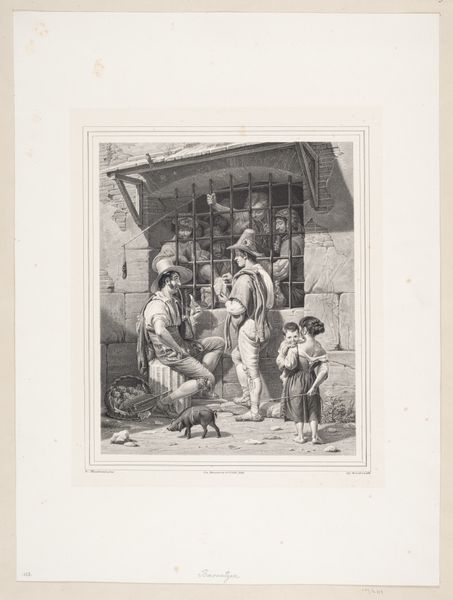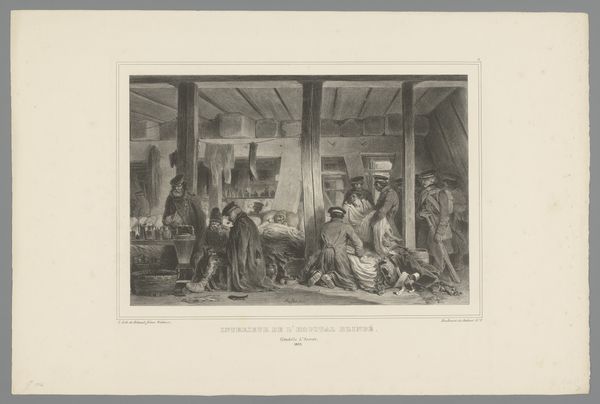
drawing, etching, paper, ink
#
drawing
#
etching
#
landscape
#
etching
#
paper
#
ink
#
genre-painting
#
realism
Dimensions: height 185 mm, width 275 mm
Copyright: Rijks Museum: Open Domain
Curator: Before us is "Man visiting a flayer" by Alexander Ver Huell, made sometime between 1855 and 1873. It's a genre scene rendered in etching, ink, and drawing on paper, and it currently resides in the Rijksmuseum. What strikes you first about it? Editor: The overwhelming stillness. It’s a very gray scene; almost monochromatic in its essence, punctuated by subtle, soft gradients. The composition, too, is tightly compressed, and the lines seem nervous. I think there's a palpable mood. Curator: That stillness belies a much more complex socio-economic narrative. The 'flayer' or 'vilder' was a marginal figure, someone who processed animal carcasses - not considered a butcher, but a necessary, though perhaps unsavory, part of the community. Ver Huell often depicted the lives of ordinary, working-class people. Editor: Yes, there’s an intriguing interplay of textures: the rough-hewn logs of the building contrast with the smooth, almost polished faces of the figures. Notice, too, the layering effect. Curator: Absolutely, and consider how Ver Huell situates this profession within its time. During the 19th century, the rapid industrialization in countries such as the Netherlands caused great disparity, so representing this ‘vilder’ could be read as an intentional narrative of disparity. His work humanizes those often ignored or actively shunned by the prevailing culture. Editor: Formally, this reminds me of social realism. It’s a meticulously constructed composition, organized to produce that immediate affective reading, what one could even call sentimentality. Curator: I find the choice of including animals insightful as well; domestic dogs, pigs and chickens moving in a chaotic scene right in front of the door is indicative of a type of life – if we are to use intersectional analyses – which considers those often ‘forgotten’ in traditional narratives. Editor: Well, it makes one appreciate how skillfully Ver Huell directs our gaze – initially towards this complex yet calm interplay between man, animal, and abode, and then allows our minds to wander the social themes underpinning his piece. Curator: A powerful synthesis, wouldn’t you say?
Comments
No comments
Be the first to comment and join the conversation on the ultimate creative platform.
